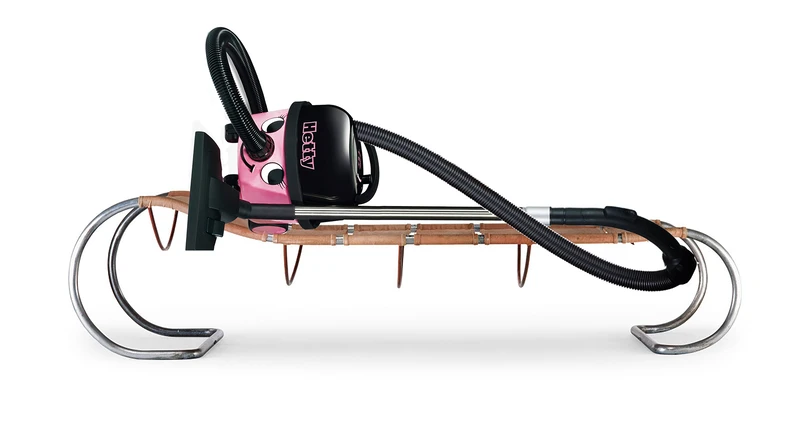P4aM2aRF!
24 Nov 2022-18 Feb 2023
PV 23 Nov 2022, 6-8pm


2 Herald St, London, E2 6JT
Herald St is pleased to announce P4aM2aRF!, an exhibition by Nicole Wermers taking place in the gallery’s East London premises. Resembling a code or password, the acronymic title stands for ‘Proposal for a Monument to a Reclining Female!’ and alludes to the public realm and its interactions with the (female) body. The exhibition features two main groups of work: a new series of photographs of locked bicycles in city centres entitled Attachments, and three sculptures from the artist’s Reclining Females, produced for her solo show this summer at Kunsthaus Glarus in Switzerland. Spanning a range of scales and mediums, the pieces on display examine rituals and hierarchies within public spaces and the infrastructure of a civic urban environment.
Following the recent reconfiguration of the gallery layout, Wermers has used the new front room as a lobby or antechamber by featuring a suite of photographs of locked bicycles, documenting an action often performed before entering a space. The prints closely frame entanglements of bicycles, chains, bolts, and wires in vibrant hues, set against grey grounds of roads and pavements. The clasps attach the vehicles onto various infrastructural elements including plastic construction barriers, streetlights, traffic signs, and the Art Nouveau entrances of Parisian metro stations, as well as to each other. This series continues Wermers’ ongoing interest in bicycle racks as sites for urban negotiations of material and public space, and follow seminal works inspired by the same subject such as the monumental outdoor sculpture Emscher Folly (2022) installed in Duisburg, Germany. A number of the images have been digitally collaged, echoing the act of attachment carried out by the locks and further complicating the already messy accumulations of colours, shapes, and ownership. Some of the slouching, amorphous devices resemble umbilical cords or intestines, enveloping the straight lines of the steel objects with an organic, corporeal component and underlining the city’s analogies to a body, with its own interconnected systems of circulation and support.
The three sculptures in the main gallery space renegotiate the reclining female, a motif inscribed in our cultural memory which has been depicted predominantly by male artists throughout art history. Wermers situates her lounging plaster figures upon modified maintenance carts. These objects from everyday life, used primarily in public areas, relate the working body to the architecture of narrow hotel corridors, airport lounges, and office buildings. Designed to make service work more efficient, they stock a multitude of cleaning products and supplies of linen and toiletries. In Wermers’ compositions, the carts function as pedestals on top of which the monolithic figures stretch out, symbolising the pause or break from work undertaken by the female body. Moulded from plaster applied generously on carved Styrofoam cores, the just over life-sized women lie in various positions of repose, with the coarse surfaces revealing the artist’s hand. Reclining Females #1–3 rest at eye level or at a vantage point looking down onto the viewer and into the exhibition space. In contrast, earlier bronze sculptures of the canon (for instance, those by Hans Josephson) are placed close to the floor on low plinths, and are looked down upon. Wermers’ figures thus claim a position of power and agency not afforded to most of their historic predecessors nor contemporary maintenance workers.
The Reclining Females are Wermers’ first figurative sculptures. Plaster, classically used for sketches and studies before being cast in bronze, is a deeply physical medium which requires the artist to work quickly as it dries and hardens within minutes. The work of housekeeping and other maintenance personnel carries its own time pressures; a hotel room has to be ‘done’ in thirty minutes or less. Labour as a theme is inherent in the genre of the reclining female, not only in the sense of lying down as a break from work but as work in itself. Portraits of female horizontality, typically nude, are portraits of the working body, whether in depictions of prostitutes such as in Manet’s Olympia or the countless paintings of models who were paid for their trouble. Wermers re-examines the origins and iconographic meaning of reclining as a trope and activity and addresses how these figures are conveyed in feminist, cultural, and formal ways. Questions of labour, spatial hierarchies, and gender-specificity are reconsidered in a situation where the female body permits itself a respite, both in its art-historical ascriptions and menial maintenance work.
A final piece is displayed in the gallery’s viewing room: a small clay recumbent figure, resting gingerly on a stack of boxes once filled with consumer goods such as painkillers, cigarettes, cakes, lotions, and other everyday products. Bearing the de-coded version of the exhibition title, this is a maquette for a monument, placed upon a high plinth to assert its gravitas. Like the racks and light poles in Wermers’ photographs, or the carts in her Reclining Females, the packages of pills and cosmetics act as frameworks of support, both for the figurine and in our daily lives. In both this proposal and the larger sculptures, she invites us to venerate the horizontal posture of pausing, awarding reverence to a normally invisible (non-)act. The works in P4aM2aRF! consider shared spaces and their various possibilities for interaction: for example, the different relationships of a customer and a cleaner to a shopping centre, or the functions of a gate as both a barrier and a place to park one’s bicycle. They continue the artist’s longstanding attention to the rituals within a system of modern city structures, celebrating overlooked gestures and actions among the hard exteriors which comprise the urban quotidian.
Text by Émilie Streiff